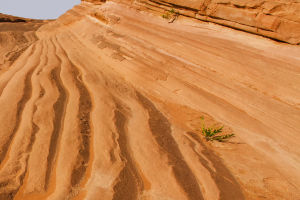The International Geological Heritage Committee (IGHC) recently announced the list of the top 100 geological heritage sites in the world, including the Petrified Forest in Mytilene, Greece, and the Caldera in Santorini.
The list of the world's geological heritage is designed to record and assess the status of the world's geological heritage monuments.
And on October 6, World Geological Diversity Day, the top 100 geological heritage sites in the world were announced, and the Petrified Forest landscape in Mytilene, Greece, and the caldera landscape in Santorini was successfully selected.
The petrified forest landscape is located in Mytilene, on the southeast coast of Lesbos Island, Greece. It is a rare petrified forest ecosystem, which includes a large number of petrified trees and fossilized animals.
These fossilized trees and animals were covered by volcanic material and formed 18 million years ago. The interior layers of volcanic ash reveal fossilized standing and lying tree trunks, branches, roots, fruits, and leaves, as well as fossilized animal bones and teeth.
In addition to being a geological landscape for visitors to enjoy, the Petrified Forest of Mytilene is an important site for scientific research in the field of earth sciences, geohazards, and atmospheric changes.
Santorini's caldera landscape has quickly become a focal point for tourism due to its fascinating landforms, unique volcanic formations, and amazing geological history. Visitors can witness successive layers of lava and volcanic ash. Reports say the site is a living earth science textbook.
UNESCO (United Nations Educational, Scientific and Cultural Organization) adopted the Convention Concerning the Protection of the World Cultural and Natural Heritage (World Heritage Convention) on November 16, 1972, in view of the various threats to cultural and natural heritage around the world from natural and man-made destruction.
The Convention Concerning the Protection of the World Cultural and Natural Heritage (World Heritage Convention) was adopted on November 16, 1972.
To inscribe natural or cultural assets of outstanding universal value on the World Heritage List, to appeal to the world's countries for their importance, and to promote international cooperation for the protection of World Heritage.
To be inscribed on the World Heritage List, a State Party that has signed the World Heritage Convention must submit a proposal to the World Heritage Committee under UNESCO.
And only those assets that meet the criteria of Outstanding Universal Value. Authenticity, Integrity, and an appropriate management and regulatory system, will have the opportunity to be inscribed on the World Heritage List.
After the Convention for the Protection of the World Cultural and Natural Heritage was established in 1972, the first World Heritage List was published in 1978.
By 2021, the total number of World Heritage properties reached 1,154, including 897 cultural, 218 natural, and 39 complex properties; 42 transnational properties; and 52 properties on the endangered list.
At present, 167 of the 193 States Parties to the World Heritage Convention have World Heritage properties.


